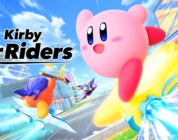Hayabusa’s Shadow Looms Large
In the annals of gaming, few series have danced the razor-edge between frustration and exhilaration quite like Ninja Gaiden, where every leap and slash feels like a high-wire act over a pit of spikes. Enter Ninja Gaiden: Ragebound, a 2025 side-scrolling revival from The Game Kitchen, the pixelated poets behind the Blasphemous duology, and published by Dotemu under Koei Tecmo’s watchful eye. This isn’t a dusty port or a half-hearted spin-off; it’s a bold fusion of the NES trilogy’s breakneck platforming with the 3D era’s brutal depth, clocking in at a taut 9-10 hours of demon-slaying across 18 stages and 8 secret ops. Set parallel to the 1988 original, the tale unfolds in Hayabusa Village as Ryu jets off to America for his eagle-grabbing escapades, leaving protégé Kenji Mozu to fend off a demon horde breaching the mortal veil.
Kenji, a fresh-faced ninja with a katana sharper than his resolve, teams up with the enigmatic assassin Kumori from the reviled Black Spider Clan, forging an uneasy alliance that taps into forbidden powers and soul-fusing Ninja Fusion mechanics. The narrative, laced with cutscenes and lore drops, echoes the series’ melodramatic flair, think over-the-top demon lords and clan betrayals, but grounds it in themes of duty and forbidden temptation, much like Blasphemous‘ penitential pilgrimages. We hails it as a “f***ing awesome” return to 2D roots, capturing that rare alchemy where nostalgia meets modern polish. The story’s scattershot delivery prioritizes spectacle over subtlety, ensuring cutscenes propel you back to the action rather than bogging down the pace.
 For series veterans, Ragebound is a homecoming that respects the Dragon Lineage without pandering, weaving in nods to classic foes and the gray ninja’s fateful duel. Newcomers, meanwhile, get a crash course in ninja lore that’s accessible yet immersive, with the dual-protagonist structure, switching between Kenji’s melee prowess and Kumori’s ranged shuriken barrages, unraveling interconnected tales that add emotional weight to the carnage. In a year dubbed the “Year of the Ninja” by Team Ninja, complete with Ragebound, the Ninja Gaiden II Black remaster, and the looming Ninja Gaiden 4, this entry proves the franchise’s claws are as sharp as ever, blending reverence with reinvention in a way that feels like fate’s cruel jest on lesser action games.
For series veterans, Ragebound is a homecoming that respects the Dragon Lineage without pandering, weaving in nods to classic foes and the gray ninja’s fateful duel. Newcomers, meanwhile, get a crash course in ninja lore that’s accessible yet immersive, with the dual-protagonist structure, switching between Kenji’s melee prowess and Kumori’s ranged shuriken barrages, unraveling interconnected tales that add emotional weight to the carnage. In a year dubbed the “Year of the Ninja” by Team Ninja, complete with Ragebound, the Ninja Gaiden II Black remaster, and the looming Ninja Gaiden 4, this entry proves the franchise’s claws are as sharp as ever, blending reverence with reinvention in a way that feels like fate’s cruel jest on lesser action games.
Katana Ballet: Precision in the Chaos
Ragebound‘s gameplay is a masterstroke of momentum-driven mayhem, distilling the NES originals’ pick-up-and-play ethos into a fluid ballet of jumps, dashes, and dismemberments that demands pixel-perfect timing without devolving into trial-and-error torture. You control Kenji (or Kumori in select segments) through linear-yet-branching stages, think demon-infested construction sites or shadowy clan dojos, where platforming gauntlets interweave with enemy swarms, encouraging room-clearing combos over rote memorization. The core loop revolves around chaining kills for score multipliers, unlocking ranks that gate upgrades, a system that echoes the 3D games’ emphasis on stylish slaughter while fitting snugly into 2D constraints, as a “respectful” challenge.
 Ninja Fusion, the game’s killer app, lets you absorb defeated foes’ essences for temporary buffs, like a spider clan’s web-slinging mobility or a fiend’s fire breath, culminating in devastating Hypercharge insta-kills that require health sacrifices or marked enemy takedowns for activation. This risk-reward tango shines in boss arenas, where colossal guardians like multi-phase greater fiends force adaptive strategies: lure them into hazards, fuse mid-dodge, or unleash a charged ultimate to shatter their patterns. How these mechanics elevate basic platforming into a “hard to put down” symphony of reflexes and decision-making. Kumori’s segments introduce variety with projectile juggling and trap-setting, ensuring the dual narratives don’t just alternate but complement, like a shadow puppet play where every string-pull matters.
Ninja Fusion, the game’s killer app, lets you absorb defeated foes’ essences for temporary buffs, like a spider clan’s web-slinging mobility or a fiend’s fire breath, culminating in devastating Hypercharge insta-kills that require health sacrifices or marked enemy takedowns for activation. This risk-reward tango shines in boss arenas, where colossal guardians like multi-phase greater fiends force adaptive strategies: lure them into hazards, fuse mid-dodge, or unleash a charged ultimate to shatter their patterns. How these mechanics elevate basic platforming into a “hard to put down” symphony of reflexes and decision-making. Kumori’s segments introduce variety with projectile juggling and trap-setting, ensuring the dual narratives don’t just alternate but complement, like a shadow puppet play where every string-pull matters.
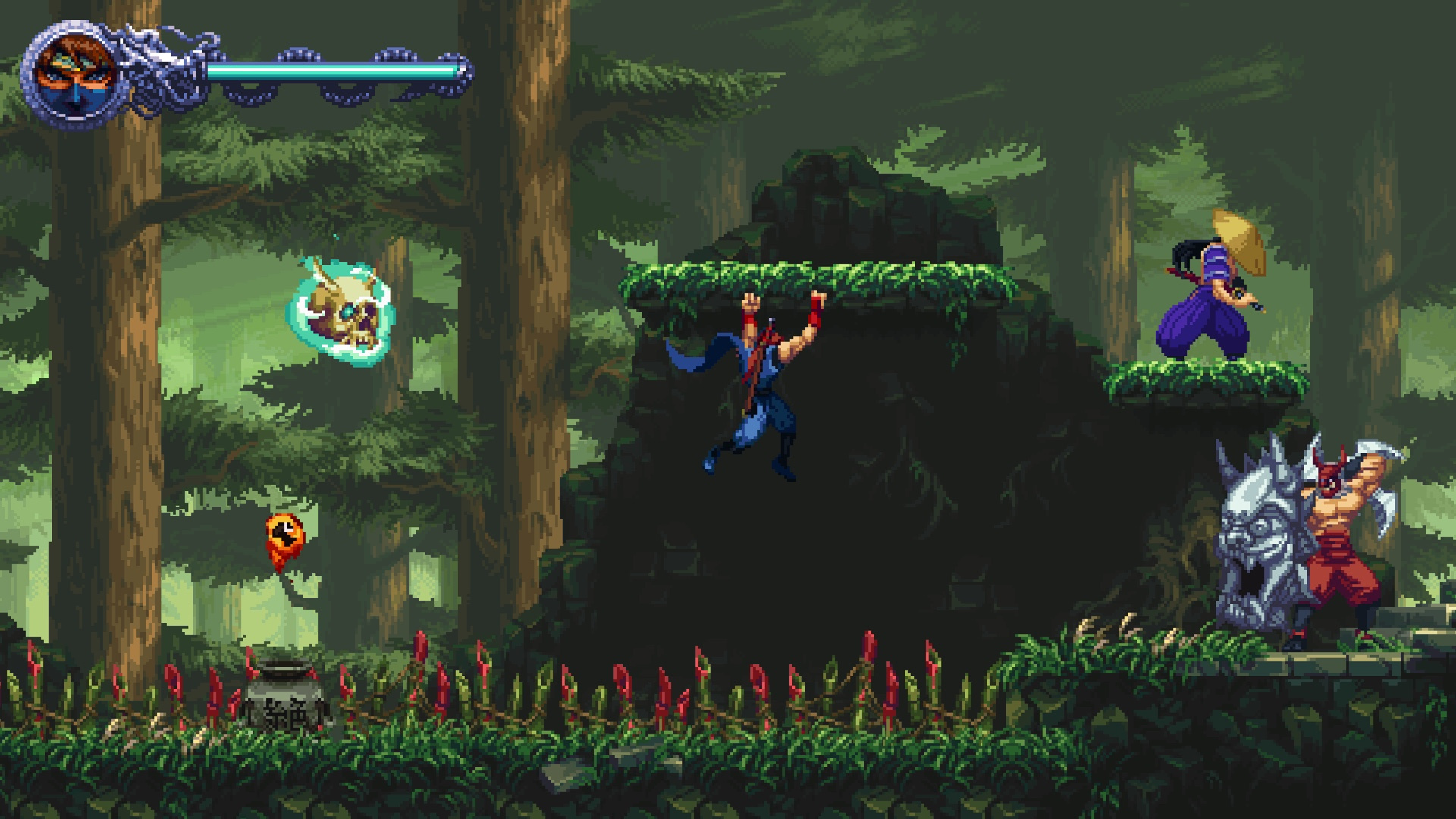 Subtle innovations abound: shops peddle talismans for buffs (e.g., extended dash trails) and Secret Arts for elemental infusions, while Overload mode amps damage at stamina’s cost, punishing the greedy but rewarding the bold. Levels trap you in spawning rooms to mimic 3D crowd control, fostering that “just one more combo” addiction, occasional auto-scroll excess that can feel railroaded. Hard mode, unlocked post-credits, spices things up with hazard remixing, spikes where pitfalls once yawned, without inflating enemy health, keeping the focus on mastery. It’s a curriculum in carnage: easy to grasp, fiendishly tough to perfect, with that Ninja Gaiden je ne sais quoi where death educates rather than infuriates, proving The Game Kitchen’s chops extend beyond metroidvania gloom to unadulterated adrenaline.
Subtle innovations abound: shops peddle talismans for buffs (e.g., extended dash trails) and Secret Arts for elemental infusions, while Overload mode amps damage at stamina’s cost, punishing the greedy but rewarding the bold. Levels trap you in spawning rooms to mimic 3D crowd control, fostering that “just one more combo” addiction, occasional auto-scroll excess that can feel railroaded. Hard mode, unlocked post-credits, spices things up with hazard remixing, spikes where pitfalls once yawned, without inflating enemy health, keeping the focus on mastery. It’s a curriculum in carnage: easy to grasp, fiendishly tough to perfect, with that Ninja Gaiden je ne sais quoi where death educates rather than infuriates, proving The Game Kitchen’s chops extend beyond metroidvania gloom to unadulterated adrenaline.
Pixelated Peril: A Visual and Sonic Onslaught
Visually, Ragebound is a pixel art pinnacle that marries Blasphemous‘ gothic grit with Ninja Gaiden‘s vibrant lethality, rendering Hayabusa Village’s bamboo groves and demon realms in meticulous 16-bit splendor upgraded for 2025 eyes. Environments pulse with detail, rippling water hazards, crumbling scaffolds underfoot, and gore-soaked tatami mats, while enemy designs, from scuttling imps to hulking oni, boast fluid animations that make every parry a frame-by-frame feast. GamesRadar+ dubs it “pitch-perfect,” with lighting effects casting dramatic shadows during Hypercharge flares that turn boss fights into silhouette spectacles. The brutal aesthetic nods to the past, think blood arcs echoing NES limitations, but pushes boundaries with layered parallax scrolling and destructible foregrounds, ensuring no two slashes look alike.
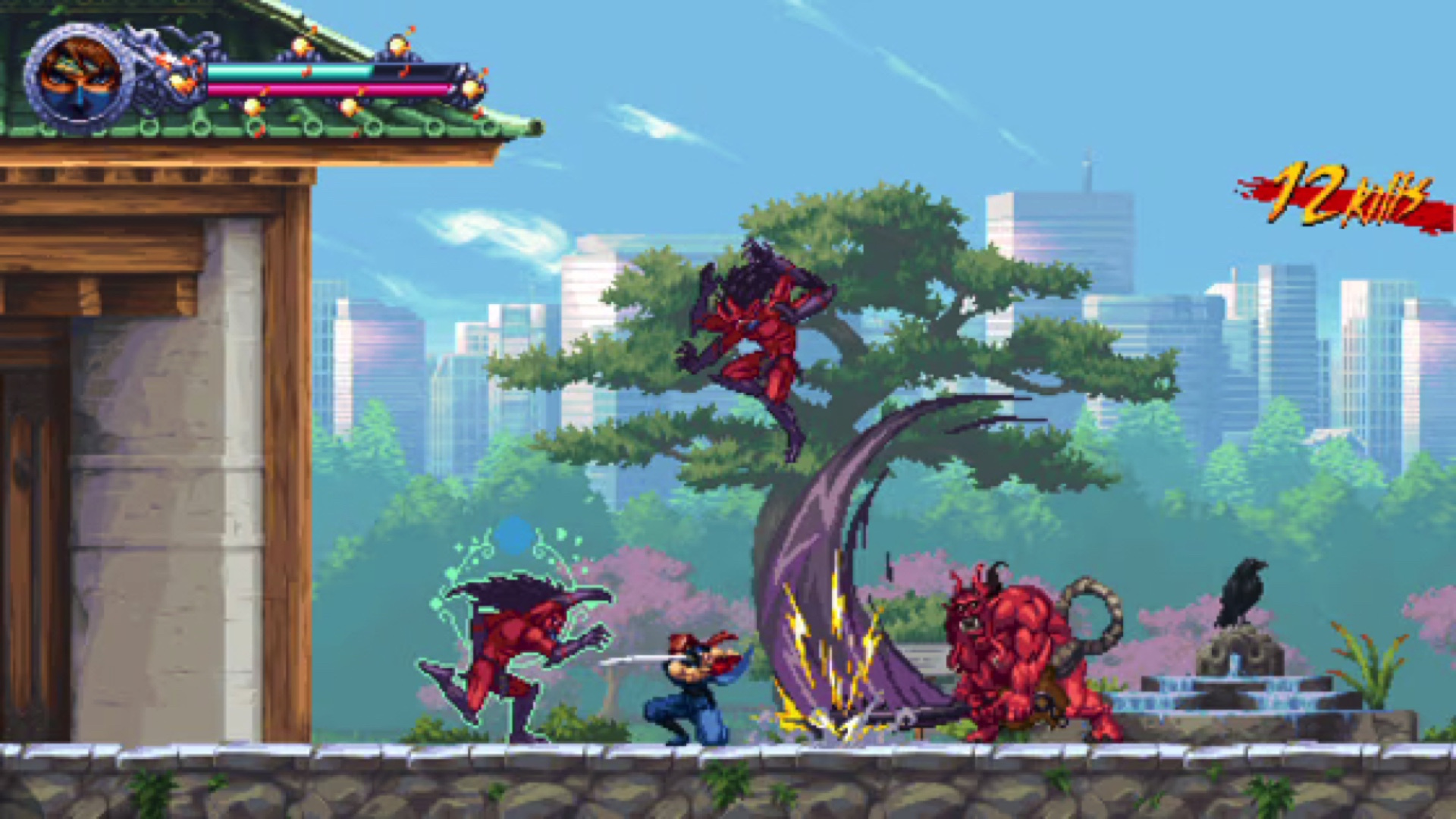 Kumori’s shadowy palette contrasts Kenji’s crimson accents, visually telegraphing their fusion synergy, while secret ops challenge rooms double as visual puzzles, hiding paths behind illusory walls. Performance is buttery, with nary a hitch in the frenzy, though some Reddit users note minor sprite pop-in during rapid dashes. It’s a love letter to retro revivalists, evoking Strider or Shinobi while standing tall among modern peers like 9 Years of Shadows.
Kumori’s shadowy palette contrasts Kenji’s crimson accents, visually telegraphing their fusion synergy, while secret ops challenge rooms double as visual puzzles, hiding paths behind illusory walls. Performance is buttery, with nary a hitch in the frenzy, though some Reddit users note minor sprite pop-in during rapid dashes. It’s a love letter to retro revivalists, evoking Strider or Shinobi while standing tall among modern peers like 9 Years of Shadows.
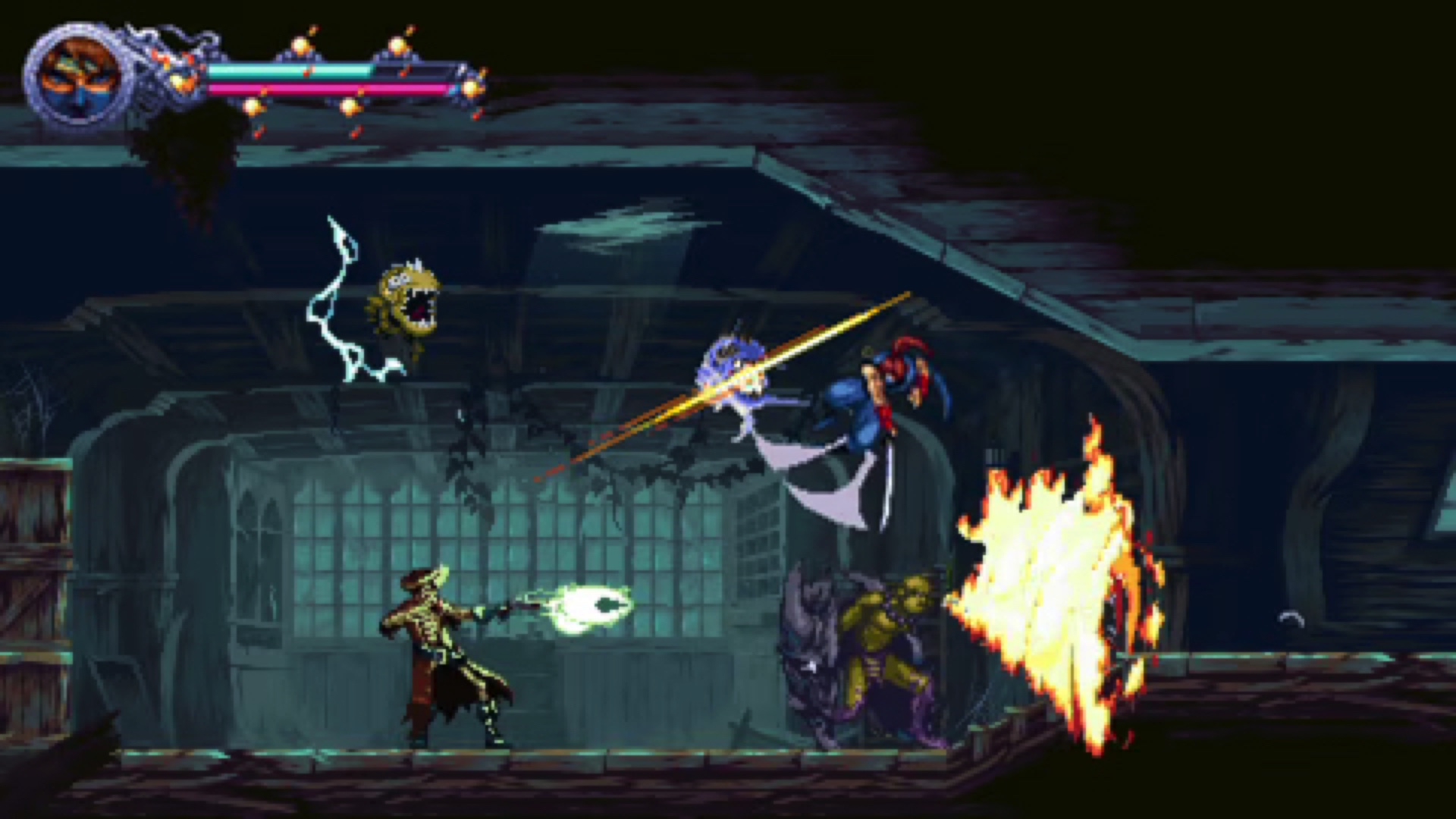 The soundtrack, helmed by Sergio de Prado with cameos from NES composers Keiji Yamagishi, Ryuichi Niita, and Kaori Nakabai, is a thunderous tapestry of shamisen riffs and orchestral swells that escalate from tense stealth prowls to heart-pounding boss themes. Sound design seals the deal: the satisfying shink of a katana draw, the guttural roar of a fiend’s demise, and the ethereal hum of Ninja Fusion all layer into an auditory assault that’s as immersive as it is nostalgic. Simply “phenomenal,” with epic boss cues that transform duels into operatic clashes. Voice work is sparse but effective, with gravelly clan elders and demonic snarls adding gravitas, though the lack of full dub keeps the focus on action, wise, lest subtitles slow your shuriken hand.
The soundtrack, helmed by Sergio de Prado with cameos from NES composers Keiji Yamagishi, Ryuichi Niita, and Kaori Nakabai, is a thunderous tapestry of shamisen riffs and orchestral swells that escalate from tense stealth prowls to heart-pounding boss themes. Sound design seals the deal: the satisfying shink of a katana draw, the guttural roar of a fiend’s demise, and the ethereal hum of Ninja Fusion all layer into an auditory assault that’s as immersive as it is nostalgic. Simply “phenomenal,” with epic boss cues that transform duels into operatic clashes. Voice work is sparse but effective, with gravelly clan elders and demonic snarls adding gravitas, though the lack of full dub keeps the focus on action, wise, lest subtitles slow your shuriken hand.
Fiends and Fusions: Peaks and Perils
Ragebound‘s strengths lie in its unyielding respect for the source material, delivering combo-chaining highs that feel earned and platforming set pieces, like mid-air enemy juggling over bottomless chasms, that test reflexes without cheap shots. The 18-stage structure, peppered with alternate demon-realm paths, ensures variety, from trap-laden dojos to wave-based arenas that homage 3D room clears. Metacritic’s “generally favorable” aggregate (around 82/100) underscores this, with praise for “masterful level design” and “thrilling boss battles.” Replayability soars via score-chasing ranks, hard mode tweaks, and collectible talismans that encourage build experimentation, turning a 9-hour jaunt into dozens of “one more run” sessions.
 Quirks emerge in the upgrade system’s occasional grind, talismans demand precise farming, and a smattering of auto-scroll levels that can cramp creative routing. Boss variety dips midway, recycling patterns with palette swaps, and the narrative’s broad cast occasionally overwhelms with exposition dumps. Still, these are nits in a tapestry of triumphs; GameSpot calls it “a cut above,” where inspired mechanics like Hypercharge forgive the occasional lull. Humor glints in enemy behaviors, spiders webbing themselves in panic, or upgrade flavors like a “cursed shuriken” that ricochets unpredictably, reminding us ninjas, too, trip on their own shadows.
Quirks emerge in the upgrade system’s occasional grind, talismans demand precise farming, and a smattering of auto-scroll levels that can cramp creative routing. Boss variety dips midway, recycling patterns with palette swaps, and the narrative’s broad cast occasionally overwhelms with exposition dumps. Still, these are nits in a tapestry of triumphs; GameSpot calls it “a cut above,” where inspired mechanics like Hypercharge forgive the occasional lull. Humor glints in enemy behaviors, spiders webbing themselves in panic, or upgrade flavors like a “cursed shuriken” that ricochets unpredictably, reminding us ninjas, too, trip on their own shadows.
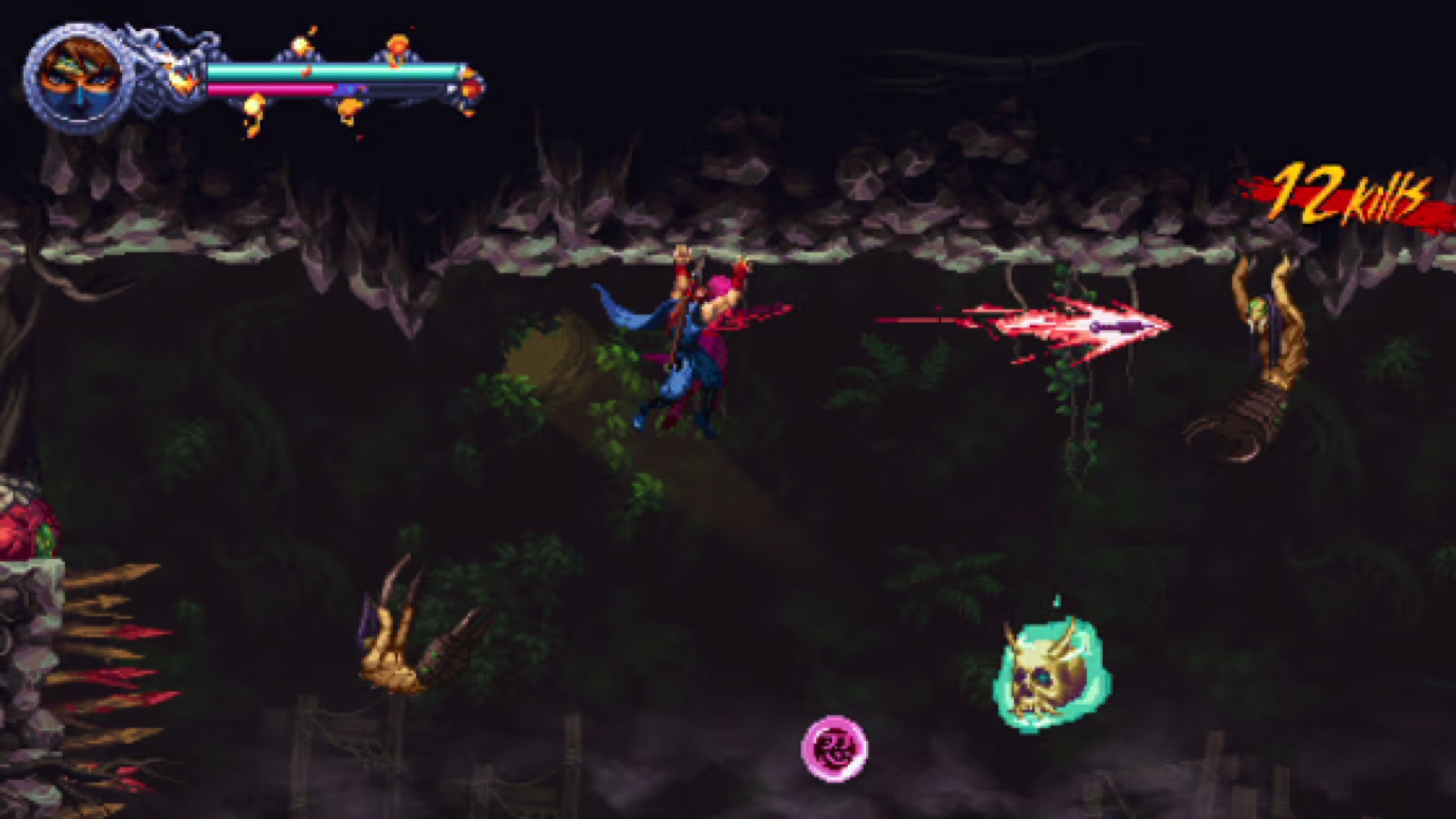 The dual-character dynamic, while innovative, shines brightest in fusion moments, though Kumori’s segments feel slightly undercooked compared to Kenji’s melee mastery. Recent X posts from players echo this, with one user gushing over a boss takedown that “took an hour but totally worth it,” capturing the masochistic joy that defines the series. At $25-30, it’s a steal for the content, especially with physical editions looming via Silver Lining Interactive.
The dual-character dynamic, while innovative, shines brightest in fusion moments, though Kumori’s segments feel slightly undercooked compared to Kenji’s melee mastery. Recent X posts from players echo this, with one user gushing over a boss takedown that “took an hour but totally worth it,” capturing the masochistic joy that defines the series. At $25-30, it’s a steal for the content, especially with physical editions looming via Silver Lining Interactive.
Dragon’s Forbidden Flame
What elevates Ragebound beyond homage is its purposeful reclamation of Ninja Gaiden‘s soul: that intoxicating blend of agility and agony, where forbidden power, be it soul-fusing or essence absorption, mirrors the series’ lore of clashing clans and demonic pacts. It’s a meditation on legacy, with Kenji’s arc echoing Ryu’s burdens, but infused with Blasphemous‘ thematic heft on temptation’s cost, as enemies’ designs symbolize corrupted virtues (e.g., a prideful oni hoarding souls). GameRant lauds this as “near-perfect,” blending old-school homage with modern flourishes like forgiving checkpoints that temper rage without dulling the edge.
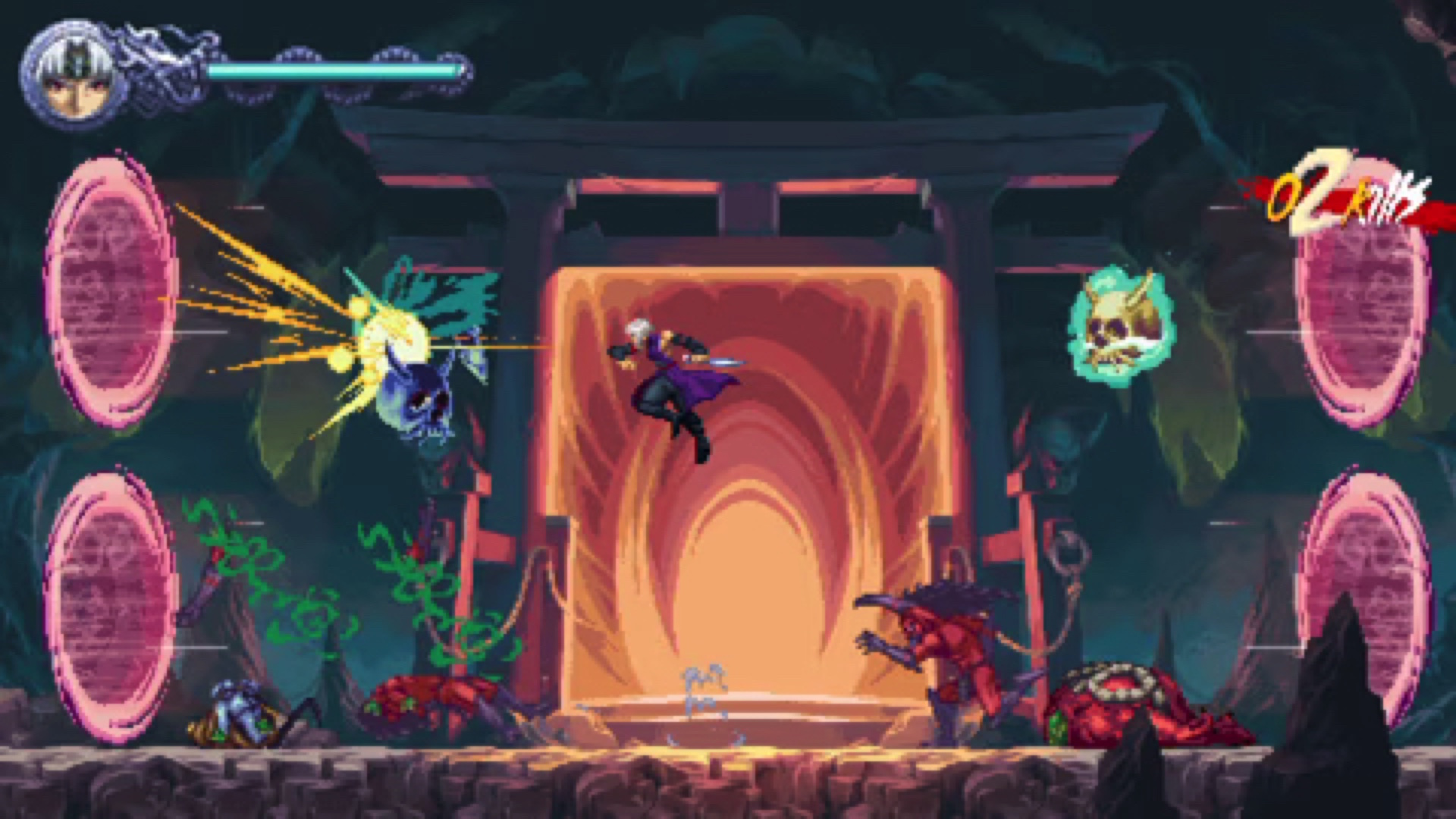 Unique touches, like environmental storytelling in hidden scrolls or fusion visuals that morph your sprite mid-combo, weave education into entertainment for lore hounds. Compared to contemporaries like 9 Sols or Spark the Electric Jester 3, it stands out for its unapologetic difficulty curve, tough but fair, never cruel, fostering mastery over masochism. X chatter buzzes with excitement, one fan declaring it a “resounding achievement” alongside Shinobi: Art of Vengeance in the Summer of the Ninja. It’s not just revival; it’s resurrection, breathing fiery life into a dragon long dormant.
Unique touches, like environmental storytelling in hidden scrolls or fusion visuals that morph your sprite mid-combo, weave education into entertainment for lore hounds. Compared to contemporaries like 9 Sols or Spark the Electric Jester 3, it stands out for its unapologetic difficulty curve, tough but fair, never cruel, fostering mastery over masochism. X chatter buzzes with excitement, one fan declaring it a “resounding achievement” alongside Shinobi: Art of Vengeance in the Summer of the Ninja. It’s not just revival; it’s resurrection, breathing fiery life into a dragon long dormant.
Shuriken’s Edge: Mastery or Mayhem?
Ninja Gaiden: Ragebound slices through the retro action clutter with katana precision, marrying blistering combat, inventive platforming, and a pixelated aesthetic that’s as gorgeous as it is gore-drenched. Its 9-10 hour campaign, bolstered by secret ops and hard mode, delivers replayable highs that honor the NES legacy while innovating with Ninja Fusion and dual narratives, making every parry a testament to The Game Kitchen’s mastery. Bosses test your mettle without breaking your spirit, and the soundtrack’s epic swells turn skirmishes into sagas, ensuring it’s a must for action aficionados craving that Dragon Sword thrill.
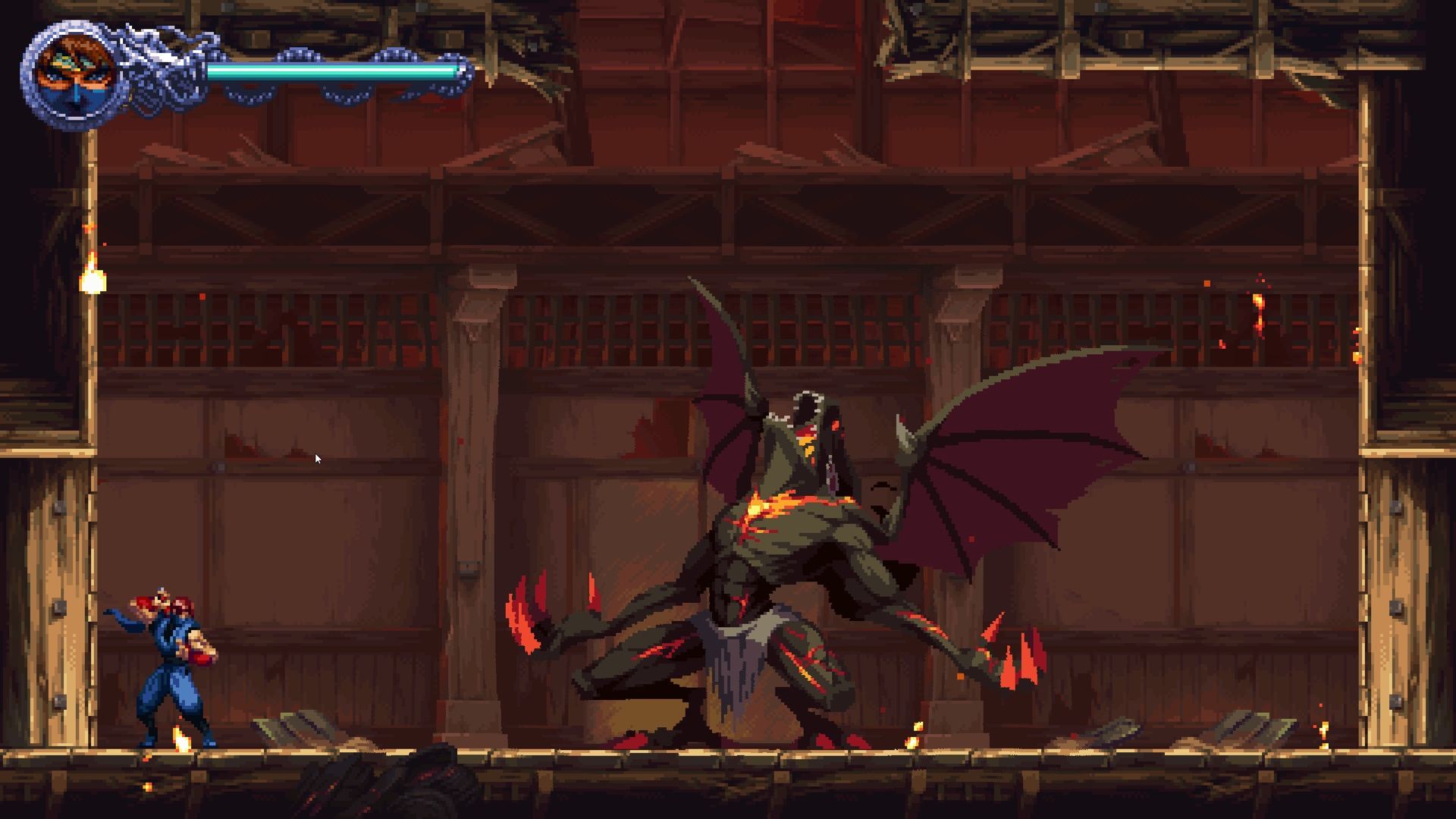 Yet, in its zeal to fuse eras, minor fissures show: upgrade grinds that occasionally halt momentum, boss patterns that echo too closely, and a story that prioritizes bombast over nuance. These are the shadows to its shine, easily eclipsed by the satisfaction of a flawless combo chain or a Hypercharge finisher that leaves demons in pixelated confetti. For newcomers, it’s an inviting gateway to the genre’s unforgiving grace; for old guards, a worthy successor that whispers, “The dragon endures.”
Yet, in its zeal to fuse eras, minor fissures show: upgrade grinds that occasionally halt momentum, boss patterns that echo too closely, and a story that prioritizes bombast over nuance. These are the shadows to its shine, easily eclipsed by the satisfaction of a flawless combo chain or a Hypercharge finisher that leaves demons in pixelated confetti. For newcomers, it’s an inviting gateway to the genre’s unforgiving grace; for old guards, a worthy successor that whispers, “The dragon endures.”
In a summer stacked with ninja nostalgia, from Ragebound to Shinobi revivals, this entry carves its niche as the 2D Ninja Gaiden pinnacle, proving that with the right hands on the shuriken, even forbidden alliances yield legendary results.
“We prepared this review with a digital review copy of NINJA GAIDEN: Ragebound for the PS5 version provided by Dotemu”.



